Renault Megane R.S. 2021 update Info
Five-door, turbocharged, auto-only Megane RS is unashamed of the new school - but don't hold that against it.
.
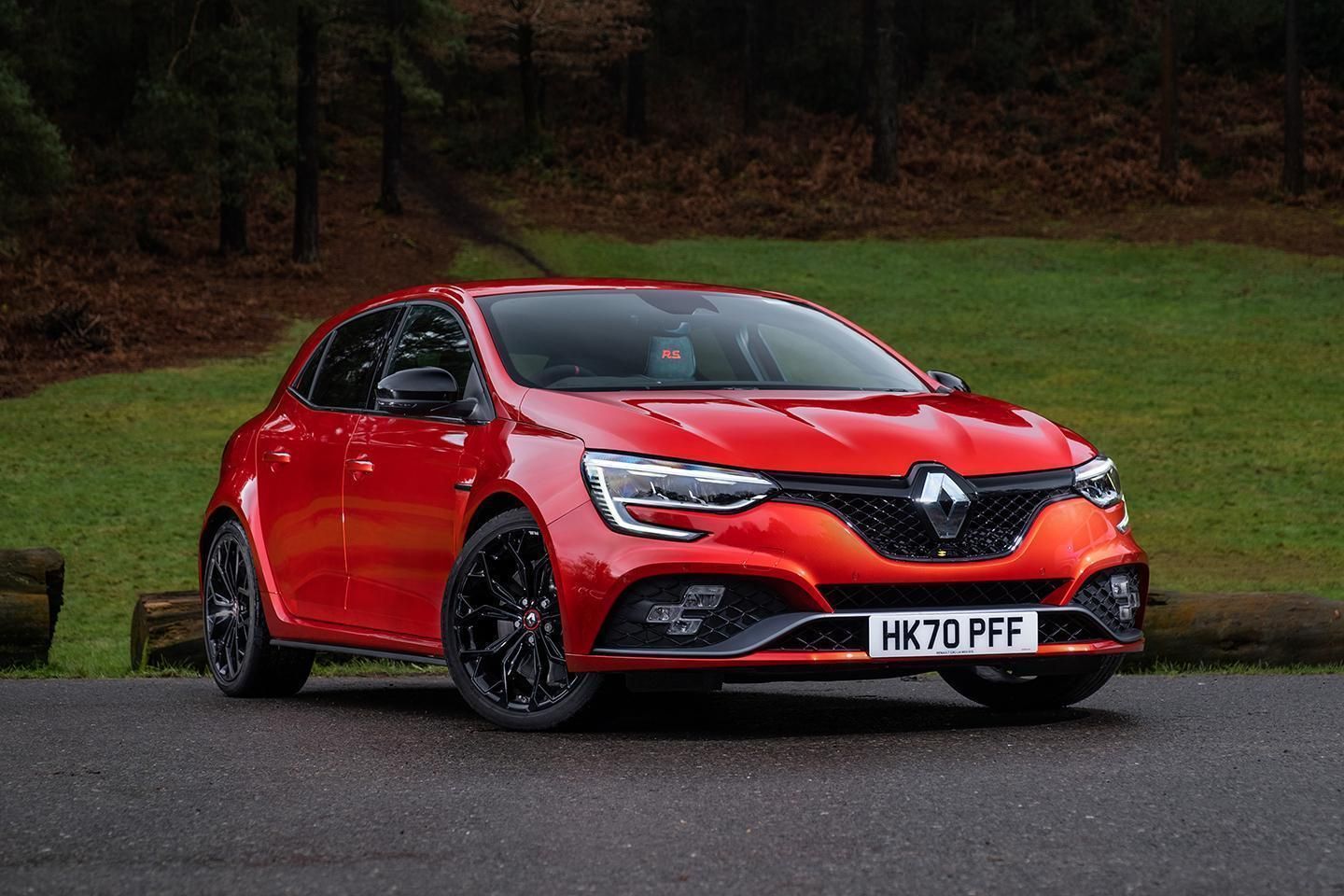
.
It's becoming the norm to speak of a golden era for hot hatches. Fast, practical, huge fun and inexpensive to run; the class-leading contenders let you have it all. Yet given how long this period has lasted, it might be better to consider brilliant hot hatches as mere par for the course in 2021. There simply isn't a dud in the line-up, from Fiesta ST through Toyota GR Yaris to Mercedes-AMG A45. Buyers are spoilt for choice - and the manufacturers have upped their game accordingly.
.
It was into a sector only marginally less competitive than 2021's that the third iteration of Renault Sport Megane arrived. The brief was tough - to keep the old guard of R.S. fans happy while bringing new buyers into the fold - but the form book spoke for itself: Renault Sport had been the standard bearers since the turn of the century.
.
As it transpired, the old 280 and 300 Trophy (all models now have 300hp, and the manual option has gone) achieved as many hits as they did misses. There was a lot to like in isolation, the Renault Megane being exciting and engaging in its own way, but the fact remained that it wasn't as fun to drive as its predecessor nor as nice to use every day as a Golf GTI. Of course, it escaped no one that the former was hard to achieve while pursuing the latter.
.
Now, three years later, we have a facelift. And, more importantly than that, a Renault Sport facelift. Which, for whatever reason, often feel like more than the sum of their parts. A tinker of this and a tweak of that often seem to have significant influence - think Clio 197 to 200 and Megane 225 to 300. Furthermore, the Megane tested here might just be the best option in the range: the Sport chassis with that now-compulsory EDC dual-clutch gearbox. Few will mourn the demise of the obdurate manual or the stiffness of a Trophy chassis, which can be wearing on the road. If the Megane is really going to be up with the class best - the i30 N now has a DCT option as well, plus there's the Focus ST automatic - then it's most probably in this configuration.
.
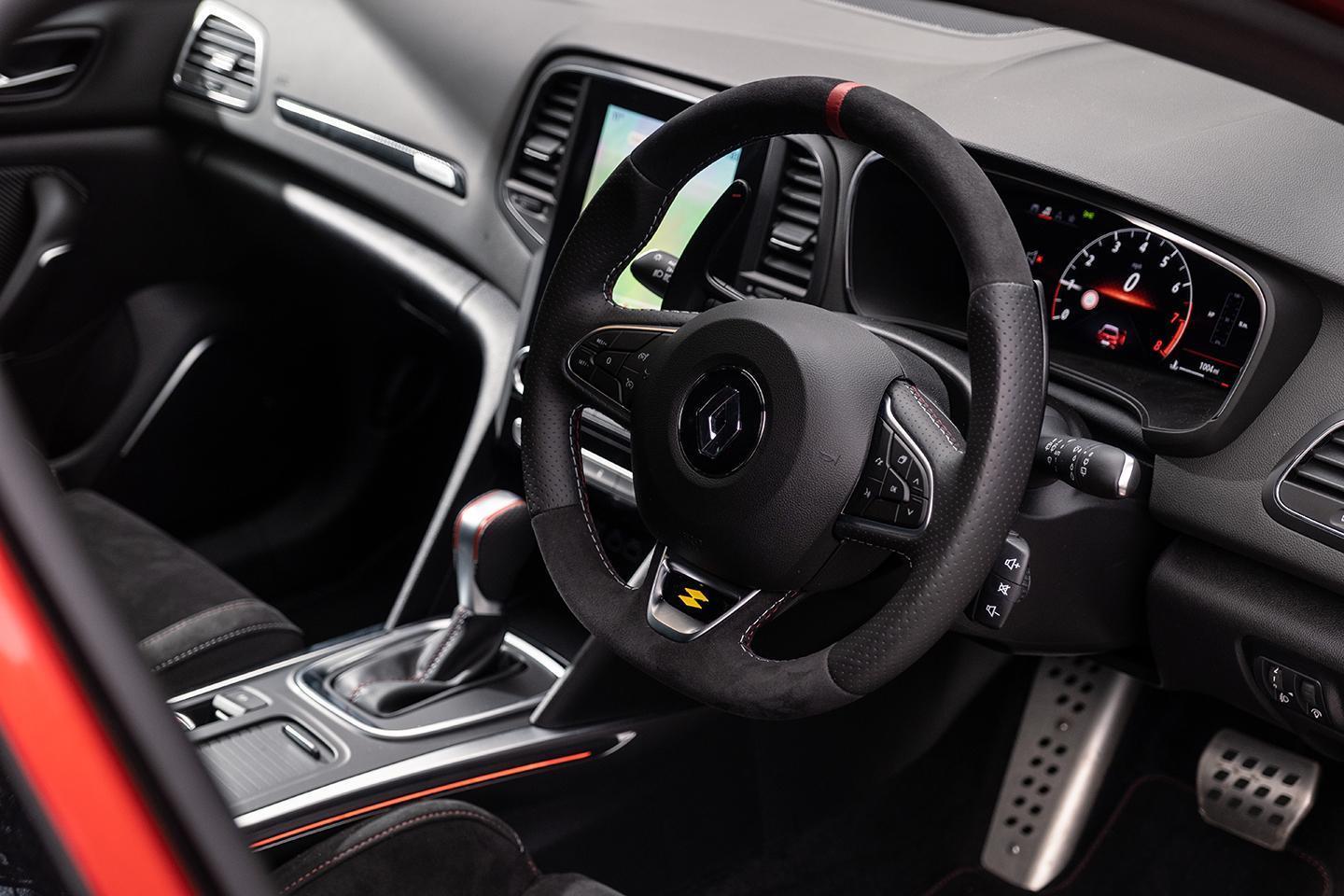
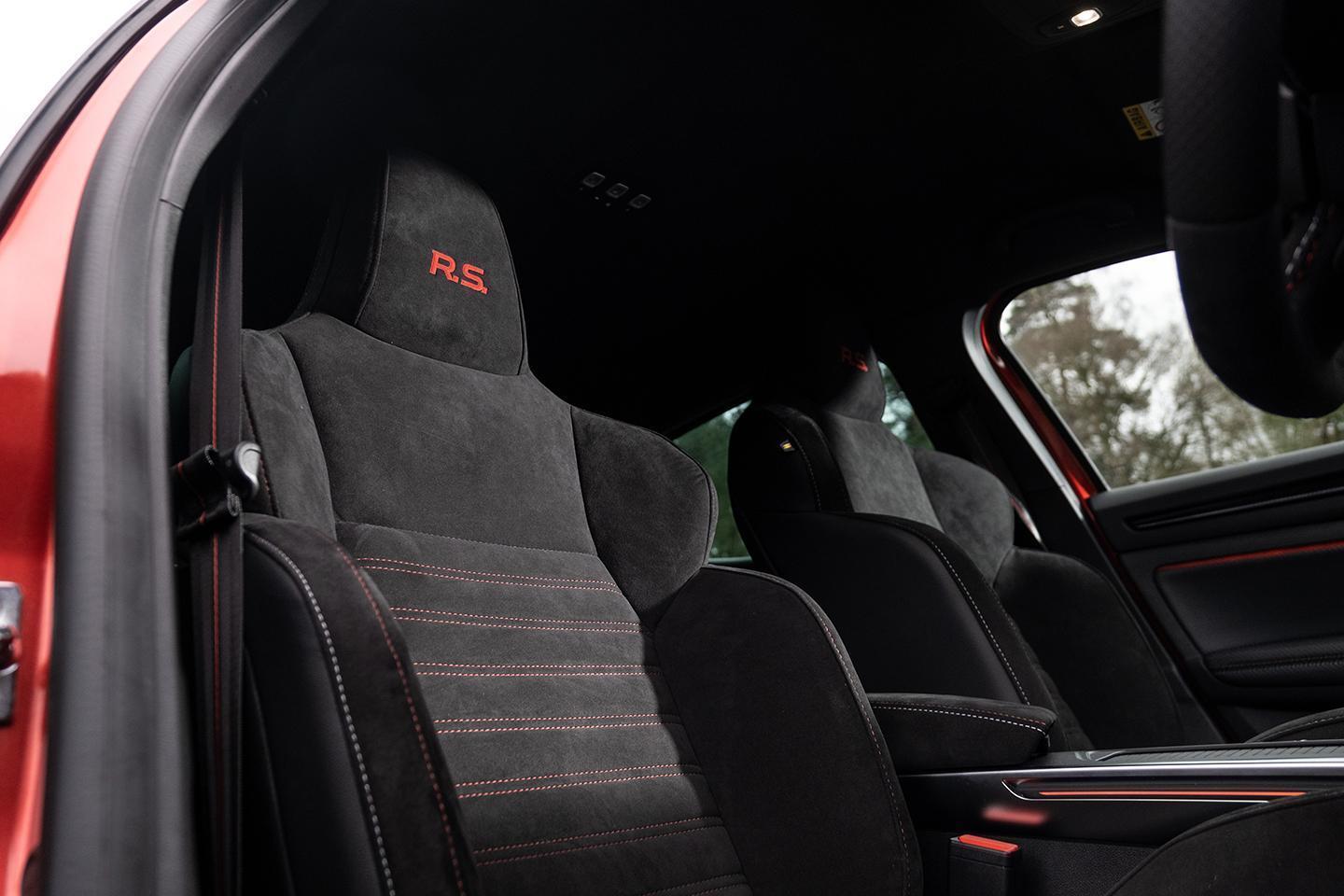
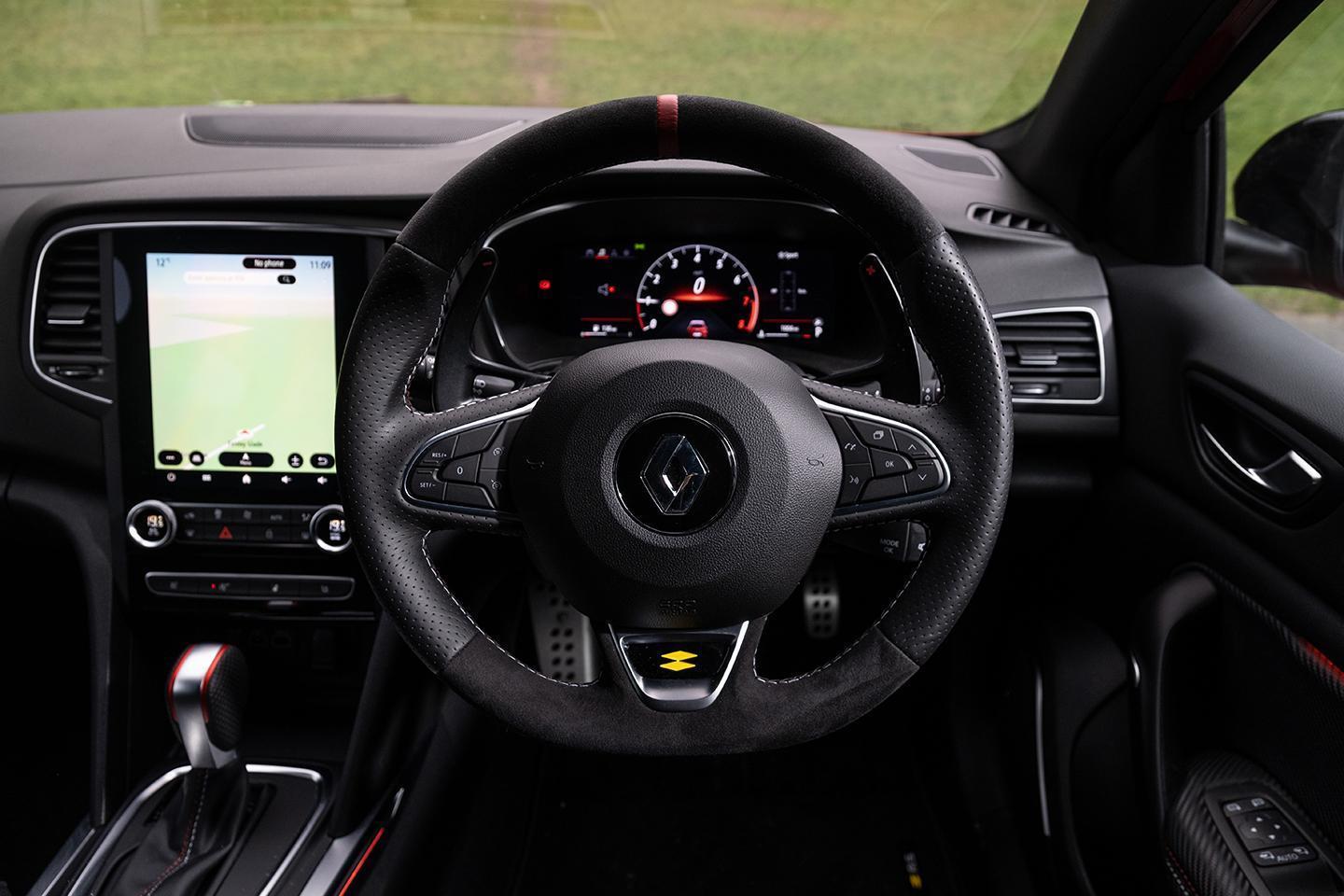
.
INTERIOR
It's funny how quickly and substantially quality perceptions alter. Back in 2018 the Mk7 Golf GTI was still being lauded for the cohesion of its cabin, against which the old Megane R.S. could only offer an unresponsive touchscreen, cheap ventilation controls and awkward integration of the manual gearbox. It was far from brilliant.
.
How times have changed. Not only has the latest Golf seemingly dropped the ball as far as ease of use goes, but Renault’s new EasyLink system has also moved the Megane's interior on leaps and bounds. Still a portrait layout and now with a 9.3-inch display, it rights the wrongs of before: specifically, the screen responds promptly to every command and maintains the consistent smartphone connection it couldn't manage before. With more vibrant displays and user-friendly menus, in addition, EasyLink is a big step forward for the Megane.
.
That's not the only thing, either. Those scratchy, unsatisfying controls for the air-con have been upgraded to weightier, higher-quality knurled dials, again a noticeable improvement and vastly preferable to the weird VW sliding scale. The R.S.-branded 'Multi-Sense' drive mode button - cycling through Comfort, Normal, Sport, Race and MySense - has been enlarged and repositioned from the dash to the transmission tunnel. Again, it's another small point that improves usability - it's far easier for your left hand to reach now, and no longer means the hazards might be pressed by accident.
.
Though Renault offers Recaro seats (and, it says, a 20mm lower driving position as a result) as an option on the Trophy, there's precious little cause for complaint in the standard ones. They don't look as racy, sure, but are well-sited, decently supportive and plenty comfortable enough. Perhaps the driving position isn't beyond improvement - the pedals are a little offset, and more reach adjustment would benefit the taller driver - but it is extremely competitive in a way its predecessor was not.
.

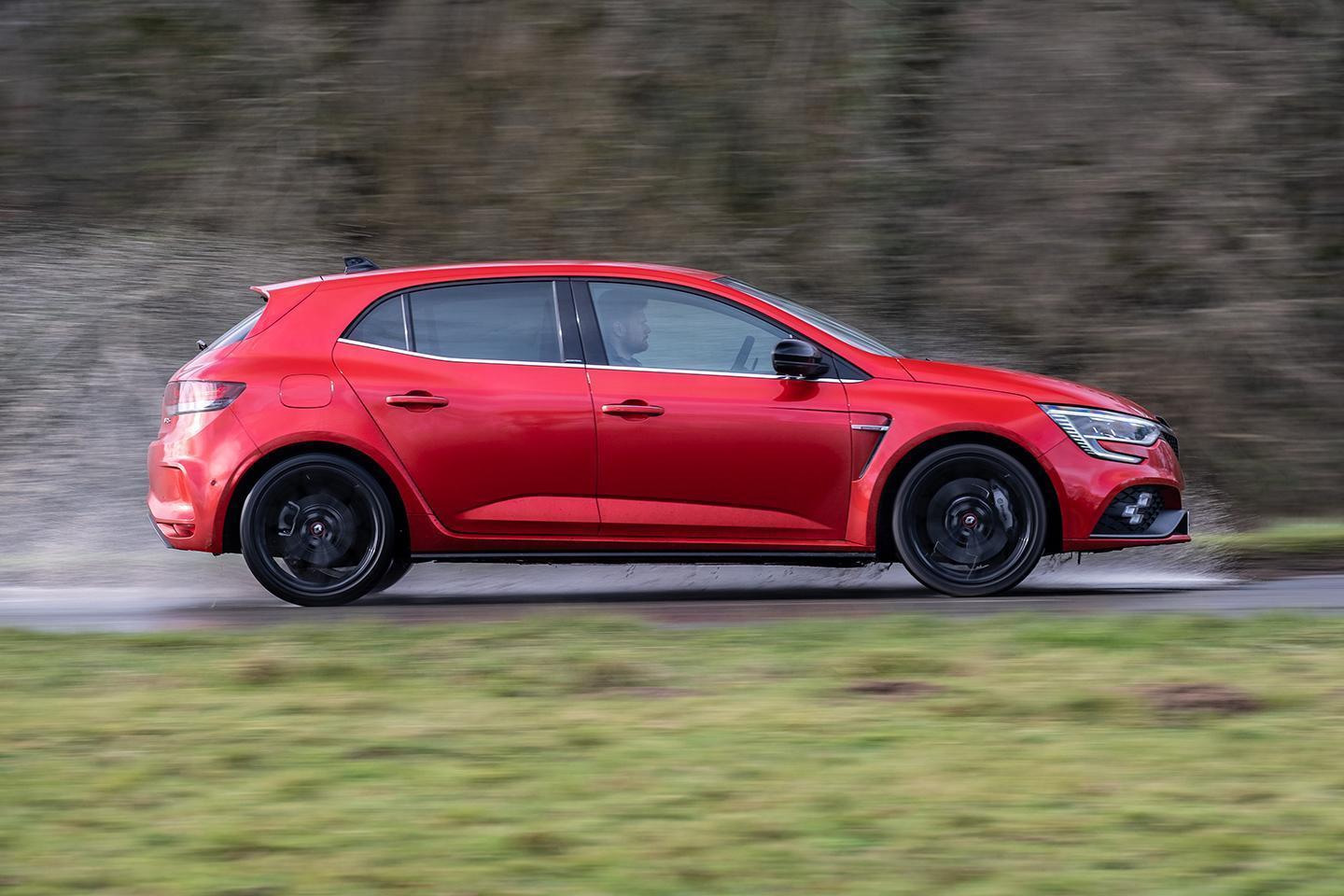
.
ENGINE & GEARBOX
The Megane is unique in its segment for using just 1.8-litres to make 300hp. Most rivals deploy 2.0-litre engines, and the Focus ST offers fully another half a litre of swept capacity from its 2.3-litre Ecoboost. For the Renault, a bore of 79.7mm and a stroke of 90.1mm means 1,798cc in total, with 300hp at 6,000rpm and 399.97Nm at 2,400rpm - as per the previous model, and competitive in its class. The closest rival on paper would be Hyundai's i30 N DCT, with 280hp and 391.83Nm.
.
Interestingly, given the hot hatch trend, the Megane only uses six gears for its dual-clutch automatic - all other rivals have seven, and the Hyundai goes with eight. The seven-speed is used in the Alpine A110 with the same engine isn't rated for the additional torque. It makes the R.S. a tad busier on the motorway than might be expected, cruising at little less than 3,000rpm, and can't aid fuel economy either - the official combined is 33, which is the same as Honda's more powerful, manual-geared Civic Type R.
.
Furthermore, although the six-speed auto is broadly speaking a decent gearbox - and comes with nice shift paddles - it isn't without fault. In the sportier drive modes, it's too keen to both hold a gear and kick down, making what might just be a spirited drive feel a lot more frenetic than it needs to. It's prone to indecision, too, and can change at inopportune moments. There are fewer issues in normal conditions, so it's often preferable to take manual control with the paddles for driving a bit quicker - their size and travel make them satisfying to use and the gearbox is responsive to fingertip requests. In the Sport and Race modes, kick down and the automatic upchanges are disabled, too. It's another welcome touch for enthusiasts that aren’t replicated everywhere.
.
The Megane's engine remains as likeable as ever, performance belying its relatively modest stature. While there isn't the ultimate zeal of something like the Civic's 2.0-litre unit, the R.S. is more than willing to rev; peak torque at higher engine speeds makes it a tad less accessible than some rivals, the flipside being a more thrilling, boostier nature. An augmented induction gurgle isn't unpleasant, especially when complemented by a very vocal set of exhaust pipes. Many have tried (and most have failed) to get the right mixture of civility and silliness from hot hatch exhausts in recent years - none have done it better than Renault.
.
In terms of raw performance, the numbers are again competitive: the Megane will reach 100km/h in less than six seconds, and reach beyond 257.5km/h. There's never any desire for more, truth be told.
.
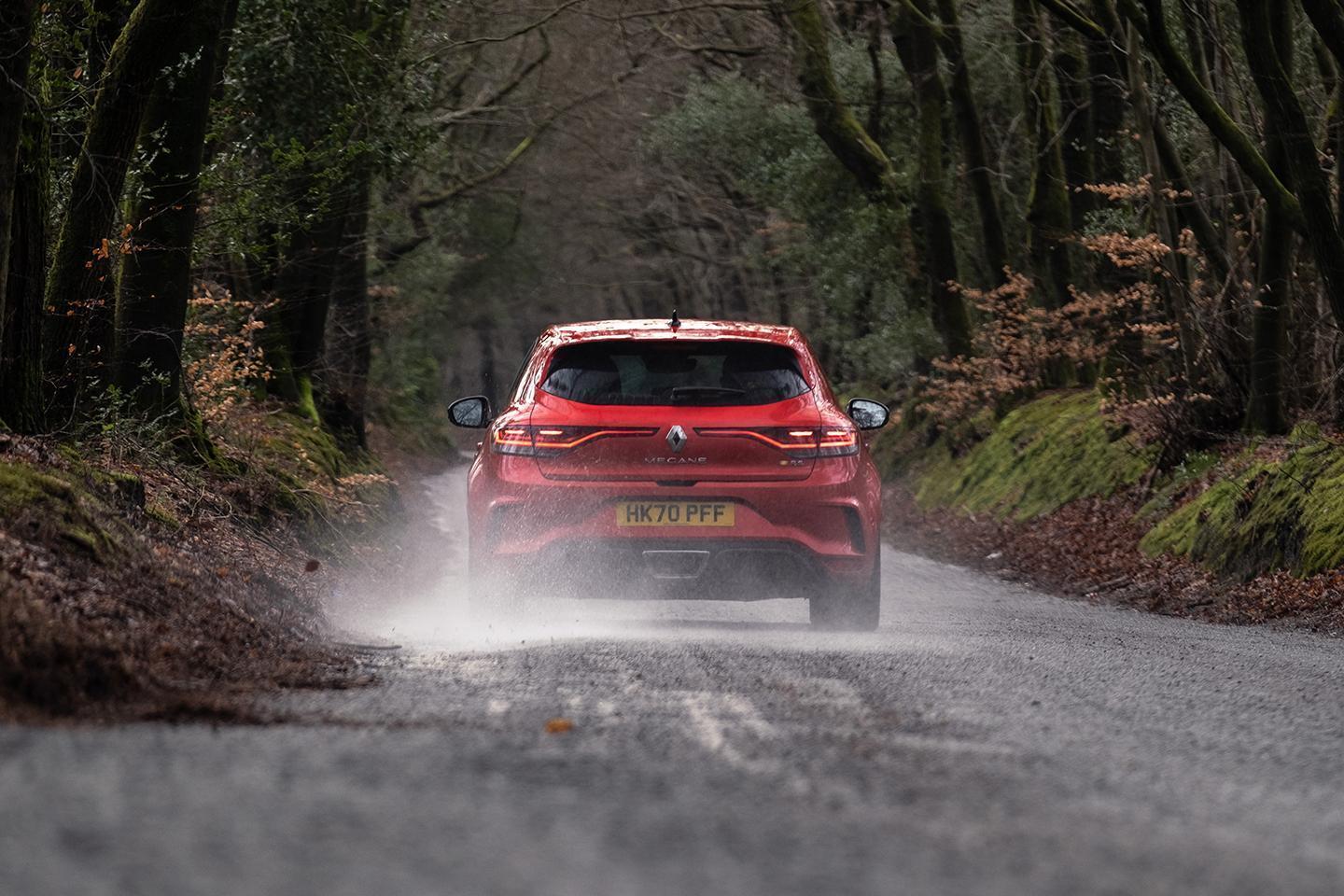

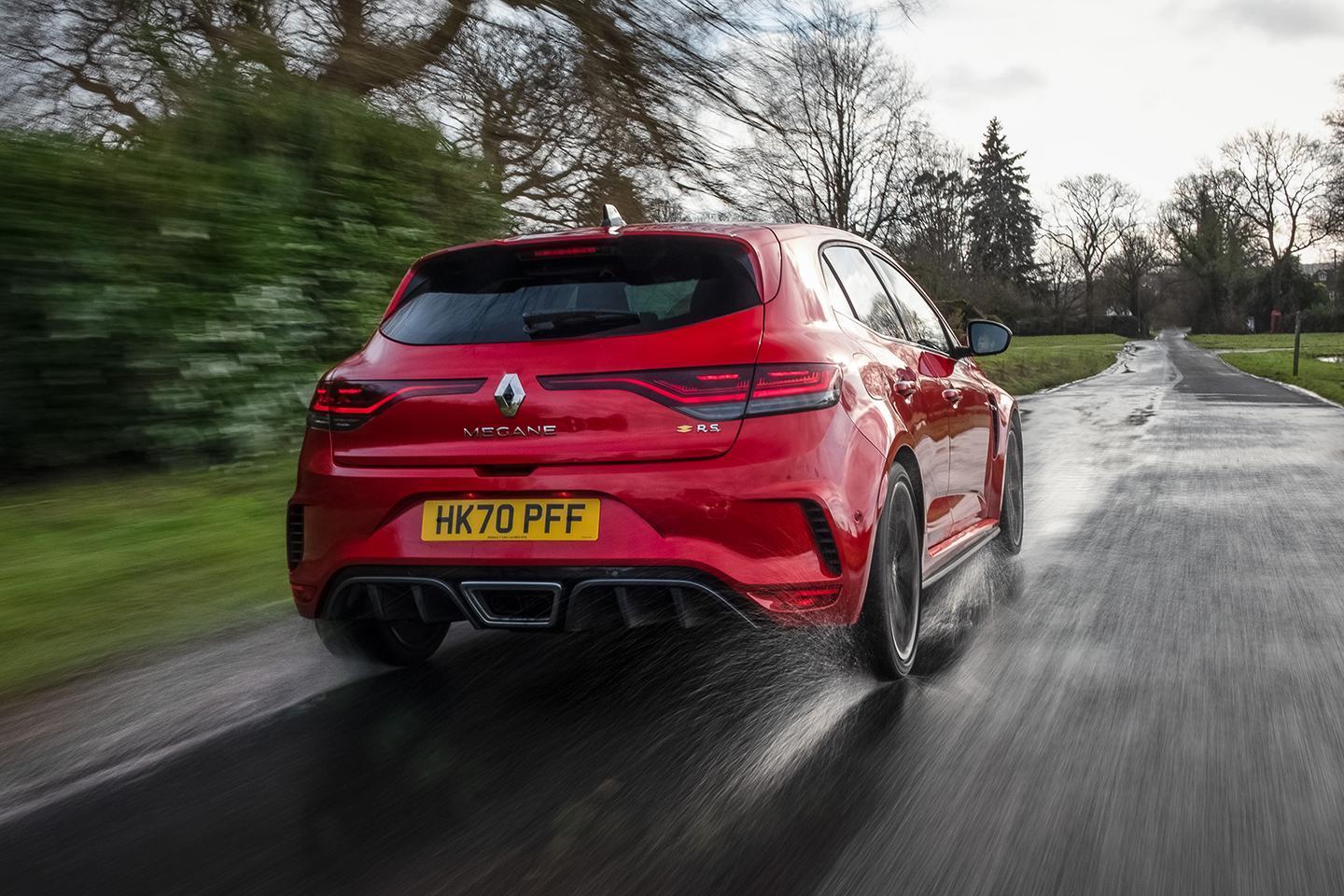
.
CHASSIS
In a world of increasing chassis configurability - optional dampers on an Octavia vRS bring 15 different settings - it's refreshing to see Renault Sport's confidence in a passive suspension set up. Buy a Sport and you get that chassis; buy a Trophy and you get the Cup chassis - 10 per cent stiffer overall with tweaks to springs, dampers, anti-roll bars and bump stops. There's no chopping and changing. You'll get 19-inch wheels as standard, too; the Sport comes with 18s, though this test car had larger rims optioned on - as most buyers will.
.
Now, a good passive chassis can be great - superior even, if its compromise is neatly struck. Trouble is a bad one can be a pain in the... well, everywhere really. Which was the old Trophy's issue, really, and it would be a surprise to find it any different this time around - inspirational in the right surroundings and doubtless a boon on circuit, but pretty tough the rest of the time.
.
For road use, it's hard to argue against the Sport chassis. If not as supple as the good old days, but neither is the Megane punishing, it blends comfort and control really well. Even on the optional, larger wheels you'll not curse it on a motorway journey, nor bemoan its lack of composure on a B-road.
.
In fact, the R.S. 300 Sport is, broadly speaking, a lot of fun when the road goes from major to minor. The oft-criticised 4Control rear-wheel steer remains standard fitment and, though still not the most intuitive, the system does seem to work better in conjunction with the slightly more accommodating Sport chassis. It's still sharp off centre, albeit not quite as darty and unnerving as previous Trophys. It helps no end that the rest of the car radiates poise - hydraulic bump stops really are handy on a craggy country lane - in the finest French tradition.
.
What a shame, then, that so much of the hard work is almost undone by the lack of a locking differential. No doubt the Megane was more exposed than usual in miserable January conditions, but to offer a 300hp, front-wheel drive car of any kind with only an open diff (the Trophy's Torsen isn't available on the Sport) seems like madness. Where rivals would dig in and redeploy torque somewhere useful, the Sport pushes wide with one tyre messily spinning up. The Perfohub front suspension, chunky 245-section Bridgestones (on the 19-inch wheel, otherwise 235) and well-sorted traction control do a good job, with far better purchase than might be expected - but ultimately they're fighting a losing battle. This means at those points where the Megane looks set to go from very good to even better, the hardware (or lack thereof) lets the side down.
.
For those eyeing up the Megane as a Golf GTI alternative, perhaps a traction deficit at the handling limit isn't the end of the world. On the other hand, a limited-slip differential could be on the options list for keen drivers that would make a precious little difference in everyday driving - certainly not in a way that stiffer suspension or a louder exhaust might - while unlocking the best from the chassis. There's little to complain about in the braking department, with 355mm discs up front, and 290mm behind, the former being clamped by Brembo callipers. In that typical Renault Sport fashion, the initial pedal feel is a little soft, but there's decent feel and performance once into the meat of the travel.
.
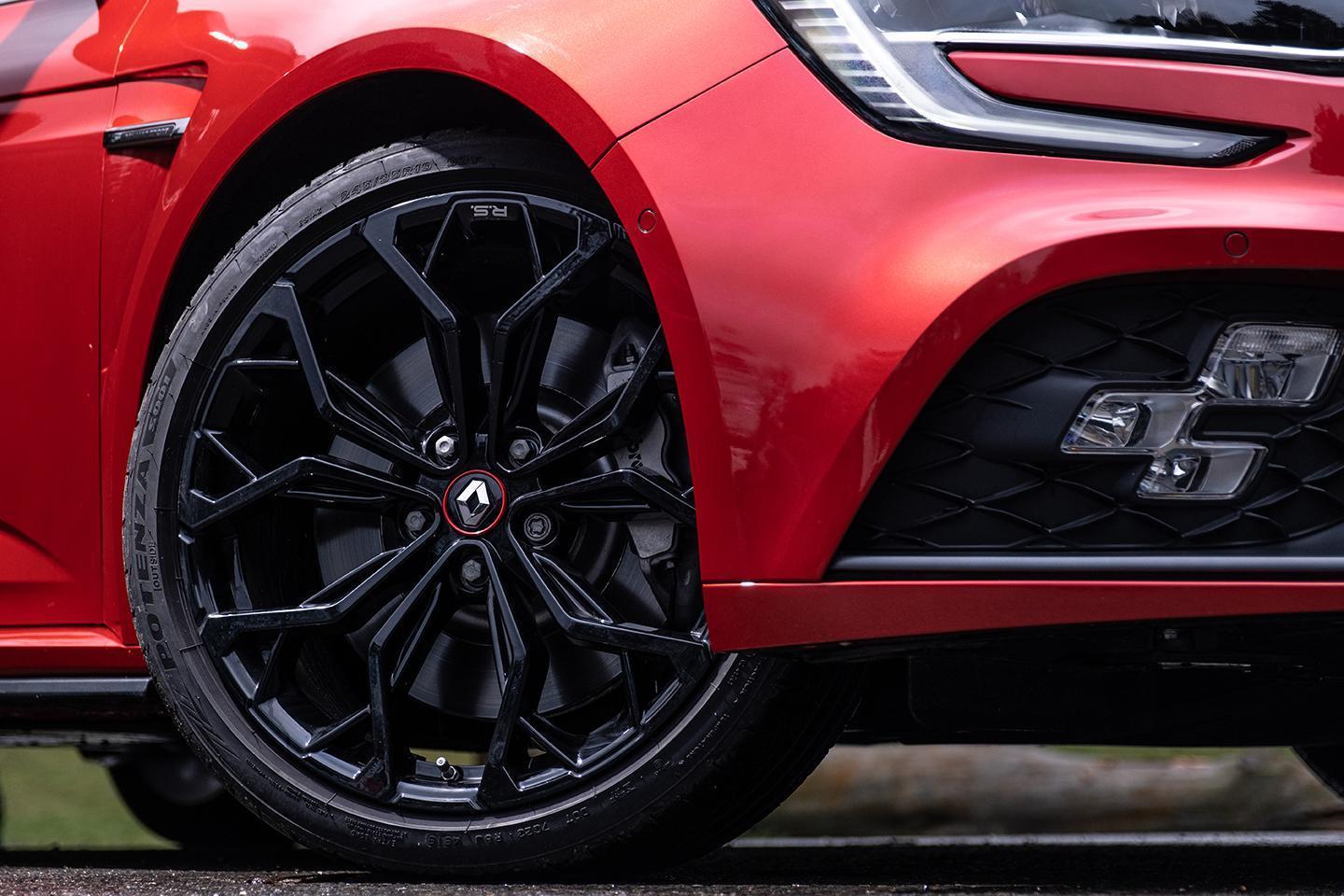

.
COSTS
The current crop of hot hatches is hard enough to separate on the road - and it's much the same on paper. The new Megane RS range begins at R633,900, which will likely lead some to throw up their hands. But consider this: the first Trophy launched in 2005 at R397,000 allowing for inflation that's R596,000 today - that’s not a big difference. Compared to the Renault Megane price, which starts at R325,900 at Group 1 Renault, it seems excessive, but consider all the ‘extras’ you’ll get.
.
This particular Megane R.S. 300 Sport was R716,360 with extras like the Flame Red paint, 19-inch wheel upgrade, Alcantara upholstery and heated seats. For reference, the last Golf GTI we tested was optioned toR768,793, and the Civic R738,314. Beyond a panoramic sunroof, there isn't anything more to add to the Renault. Smartphone mirroring with the big screen, a 10-inch TFT driver display, BOSE stereo, LED lights, reversing camera and a suite of active safety technology is all standard. That the latter never saw fit to intervene speaks to how well it's integrated.
.
The older design of dual-clutch means the Megane might be a little more expensive to run than some rivals. A less powerful Golf GTI is officially 5mpg and 25g/km better off, and a Focus ST automatic is said to be capable of 40mpg. Furthermore, as the Megane nudges over 190g/km - depending on wheel size it's 191 or 192g/km.
.
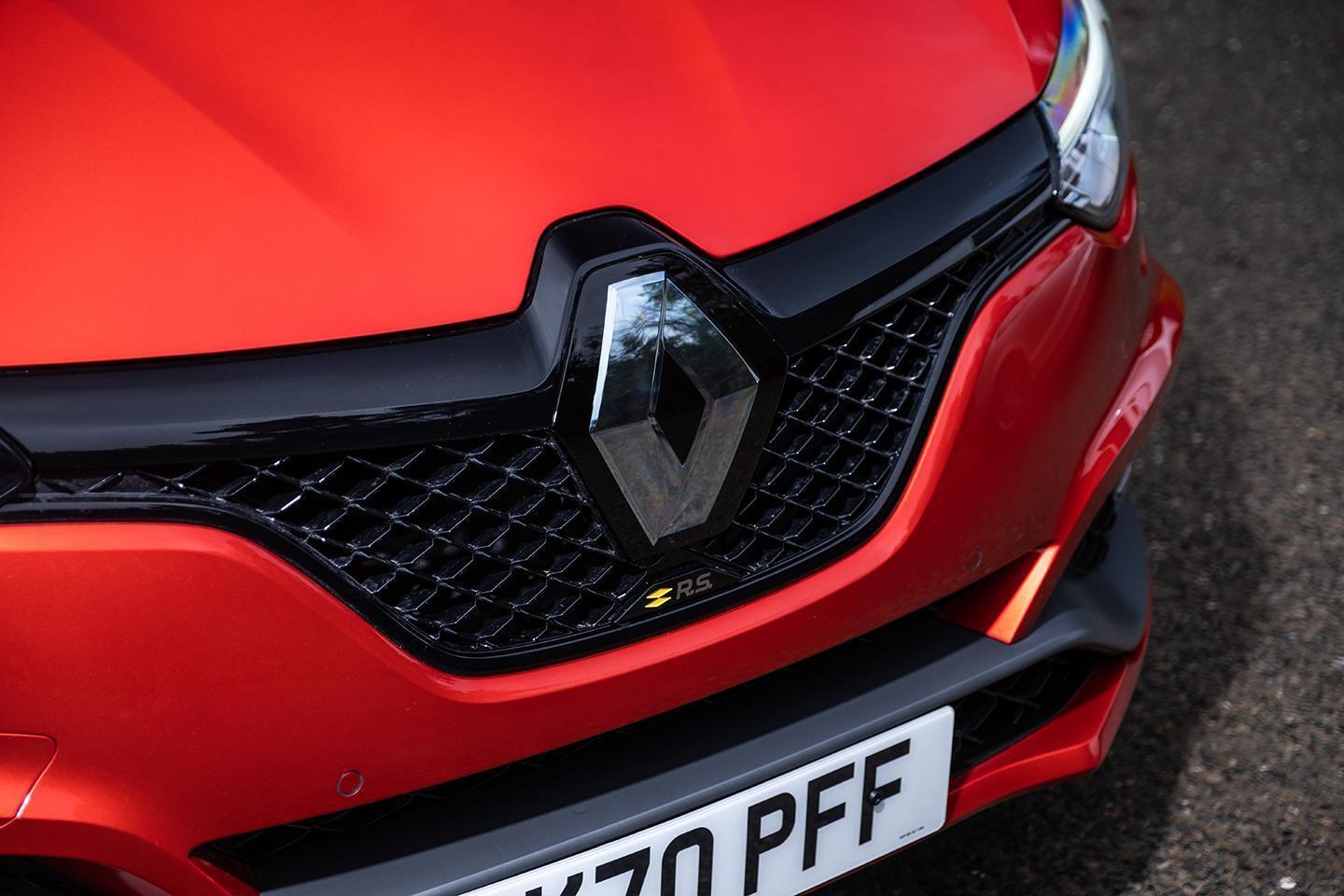
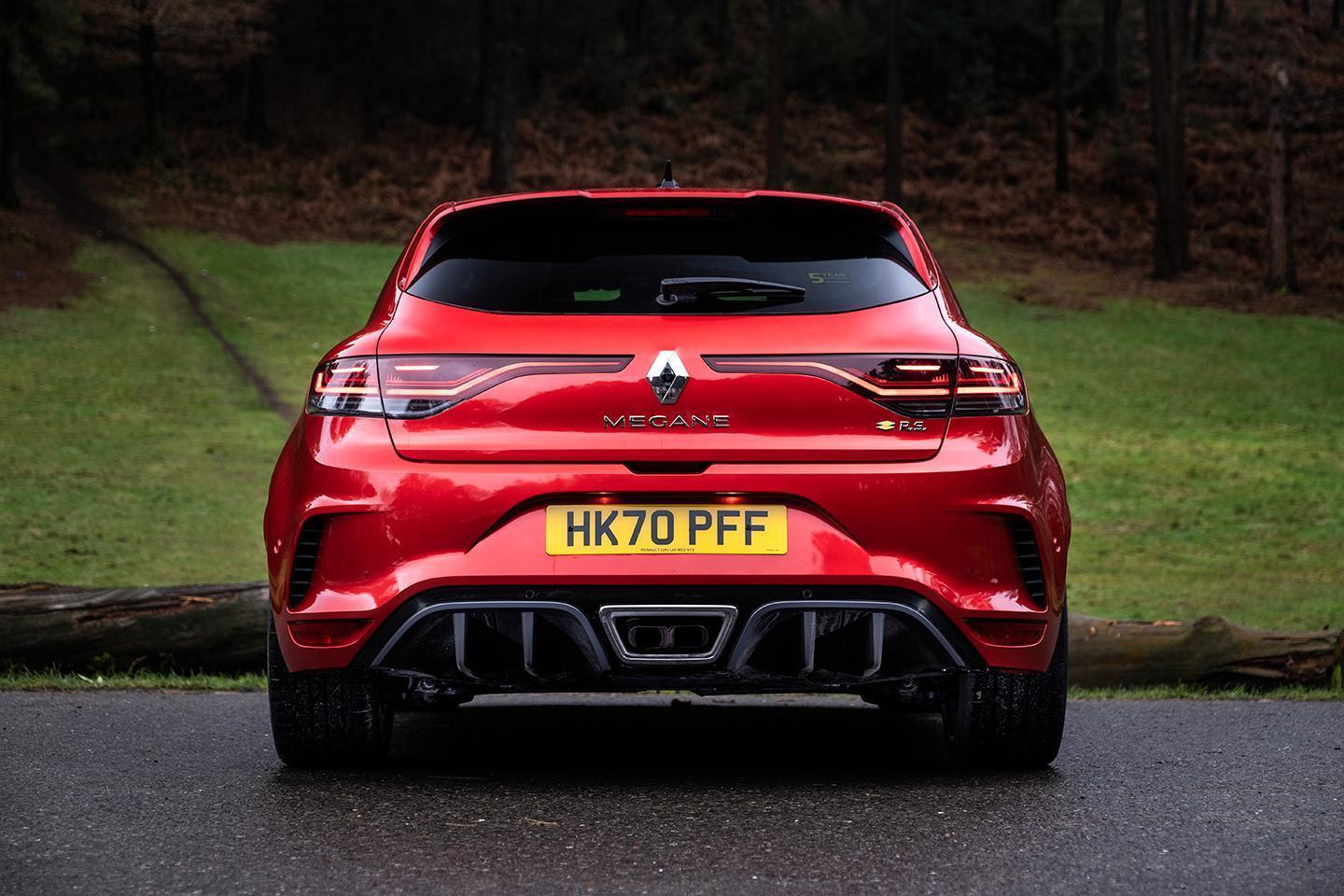
.
VERDICT
By and large, this latest Renault Sport Megane update achieves what you'd like every facelift to do: address weaknesses while leaving what was good untouched. So it's still the best looking car in the class, plenty fast enough and apparently built in a way that will dispel all your old French quality myths. In addition, a markedly improved interior makes it more appealing both in the showroom and in day-to-day use - to look at and to sit in, the Megane does feel good as well (if not better than) anything else in its class. You'd be very happy to see this parked on your drive, and that counts for a lot. A Civic Type R might not sit so well in suburbia.
.
Your priorities will ultimately dictate where the Megane lands in the final pecking order. Those after the best hot hatch to drive are still better served by the Honda, which is more capable overall and just as engaging in its own way. It shouldn't be forgotten, either, that the rear seats and boot are also more accommodating.
.
Nevertheless, this latest R.S. 300 remains a deeply impressive and - perhaps just as importantly - exceptionally likeable car. It's a richer, more rewarding experience than anything currently built on the MQB platform, a nicer place to sit than a Focus ST and a real pleasure to drive briskly. This feels like the most successful iteration of the Megane IV R.S. formula yet, with great usability evident alongside an appreciable Renault Sport edge, and deserves wider recognition as a result. It comes highly recommended. But would be even more so with a limited-slip diff.
.
SPECIFICATION | RENAULT SPORT MEGANE 300
Engine: 1,798cc 4-cyl, turbo
Transmission: 7-speed dual-clutch auto, front-wheel drive
Power (hp): 300@6,000rpm
Torque (Nm): 399.97 @ 2,400rpm
0-100km/h: 5.7 seconds
Top speed: 260km/h
Weight: 1,447kg ('kerbweight without options')
MPG: 33.6 (WLTP)
CO2: 191g/km (WLTP)
.
.
.
Article from https://joiedevivrevehicles.tumblr.com/post/651089308193783809/renault-megane-rs-2021-update-info-five-door

